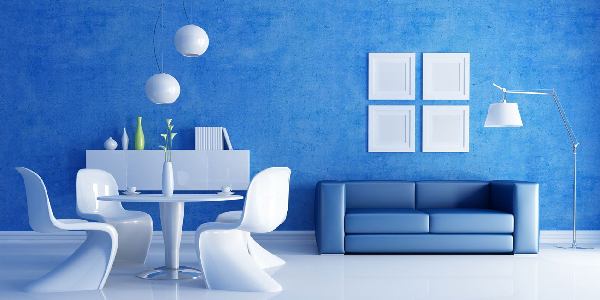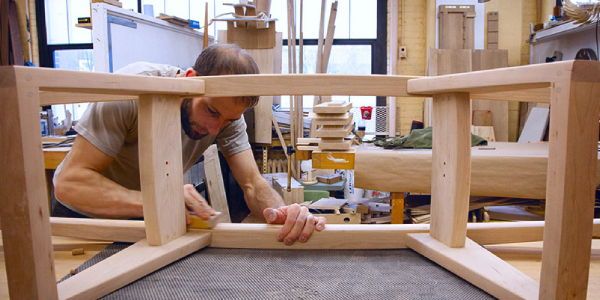Furniture And Interior Design courses

Elements of a Successful Office Design
May 24, 2021
Benefits of Healthy Office Ergonomics
May 24, 2021Furniture designers are professional artists who create functional and aesthetically pleasing furniture.
For hundreds of years, the development of furniture has also been regarded as an art form. Many furniture manufacturers have produced items for the nobility and aristocracy. If you’re searching for both a table or chair, consider how you can improve it, and if you like art, a profession as an interior designer could be a good match.
Interior designers are experts at creating practical and fashionable furniture. Today, they manufacture dressers, beds, sofas, and a variety of other pieces for modern homes, offices, and other settings. Furniture designers consider consumers’ “choices in order to achieve sustainability, ergonomics, and practicality” when creating exterior and interior furnishings.
On any given day, designers collaborate with clients to produce innovative and exclusive concepts by preparing, budget management, exploring fresh ideas, prototyping and modelling, scheduling comprehensive and final design changes and enhancements, conducting analysis, and creating new ideas and sketches.
Designers are creators with an eye for detail and a deep sense of artistic elegance. This enables them to see a project through from beginning to end, combining elegance and efficiency to create a robust and comfortable interior. Designers must have an eye for layouts and patterns, a strong knowledge of architecture, the ability to map, draw, and plan, outstanding communication and listening abilities, and architectural creative skills, including terms of size and form. Furniture designers must be skilled at drawing and have a thorough understanding of computer design tools. They are creative as well as realistic.
Getting Started in Furniture Design
The capacity to draw and imagine three-dimensional structures is also needed in this field. Designers of furniture should be willing to manage a wide range of materials, including wood, metal, fabric, paper, and pencils.
To achieve their objectives, furniture manufacturers should pursue a variety of educational routes. Many other furniture designers have technological skills that help them create an on-line portfolio, apply for work, and use design software. A bachelor’s degree is required for most aspiring designers of modern office furniture design who want to work for large corporations. A bachelor in furniture design, architecture, or interior design is required by some large corporations. Those with a furniture design degree Furniture design, industrial design, and product design are common topics. Students can also study interior design, industrial design, architecture, or product design in some cases. A degree in interior design gives students a strong academic base in woodworking while also inspiring them to explore creative interests such as painting studio art, interior design, and Carpentry, craftsmanship, building design fundamentals, property building, fine arts, sculpture, basic design problems, conceptual design, and business practises are among the courses offered. To assist aspiring furniture designers, the art program teaches art and architecture and history, the significance of creative patterns, and the principles of great design.
For example, product design is an industrial area that assists furniture designers in gaining practical knowledge that allows them to produce products that are solid, robust, and functional. Math preparation allows students to think about possible issues and ideas while still making new designs. Mathematical study areas teach students about the trade’s practical and functional dimensions. The school has a carpentry and metalworking curriculum for students involved in furniture design.
When it comes to making furniture, many people want to work as self-employed business owners or for smaller companies. In such situations, apprenticeships include a hands-on introduction to the furniture manufacturing process. The courses teach business people how to start a small business, including the complexities of customer care, ordering, tracking, meeting deadlines, and working on several projects at the same time. Workplace preparation enables new professionals to work with a variety of materials and to complete tasks that meet customer needs.
Find out more about furniture design.
Furniture designers may work for large corporations like IKEA as well as small businesses. You may also operate as an independent contractor, creating custom parts for customers.
Employees of large corporations spend the majority of their time in the workplace, although they are likely to travel to test sites, demonstration venues, showrooms, and other locations on occasion. Furniture designers who work for small businesses such as independent furniture stores spend a significant amount of time in a studio.
Make industry contacts and gain expertise.
Before meeting someone on-line or in-store, gain some business experience. Websites, on-line profiles, and LinkedIn pages will assist artists in connecting with one another and staying informed about opportunities in this field. Designers working for small companies or as independent contractors who put a greater focus on personal customer engagement and word of mouth will benefit from on-line portfolios and websites. Independent contractors can advertise their companies by attending trade shows and local events. It is also important for them to establish productive relationships with the local community and artist groups. Large corporations and furniture designers must network in order to advance their careers and find jobs at their preferred business.
Developing a Portfolio
To demonstrate to potential clients and employers that they are involved in creating relevant work, they should keep their on- line portfolios up to date. A furniture designer’s portfolio should be simple and unadorned. It is important to include high-quality images in the portfolio in order to capture quality and detail. Students should have sketches and photographs that demonstrate a consistent progression from early processes to a mature style, as well as a clear understanding of the materials used in furniture design. Mature artist portfolios can include finished pieces in a variety of styles and materials.
Portfolios on the internet are becoming more popular. Some professionals create their own websites, while students use on-line portfolio platforms to assist them in this process. Learning and advancement organisations such as the International Furnishing and
Design Association provide professional training for furniture designers. Signing up for webinars, symposia, and personal courses allows workers to further their education and develop new skills.
Professional Advancement
Despite the fact that furniture designers already make up a small percentage of the workforce, young people interested in careers in the industry face a difficult path ahead. Many people who are working hard to obtain a degree and develop their customer service, networking, and organisational skills will have more chances to do so. Young professionals who learn these skills begin their education, training, or work with mentors. Some organisations post job openings on their websites for professionals looking to advance in their careers.




